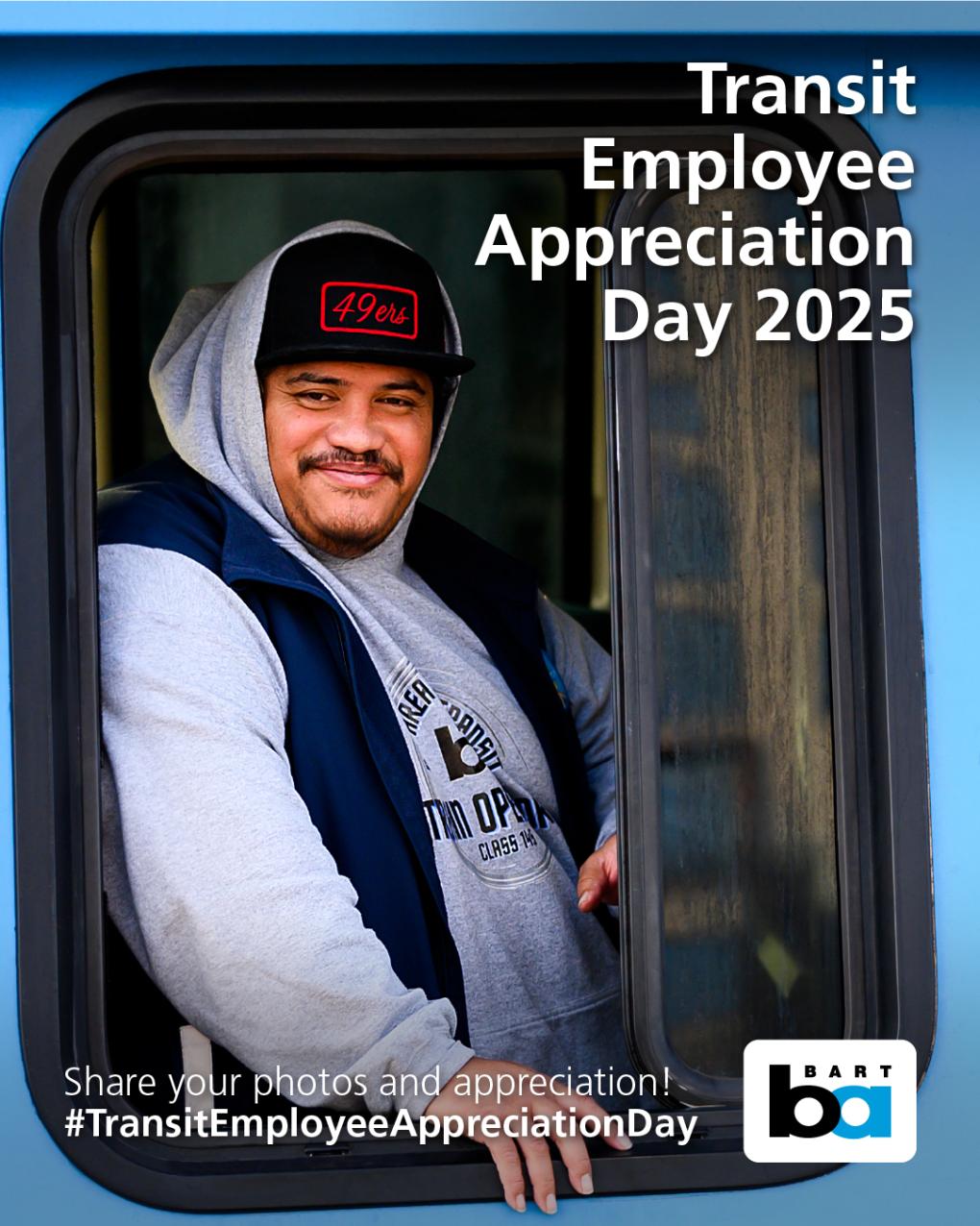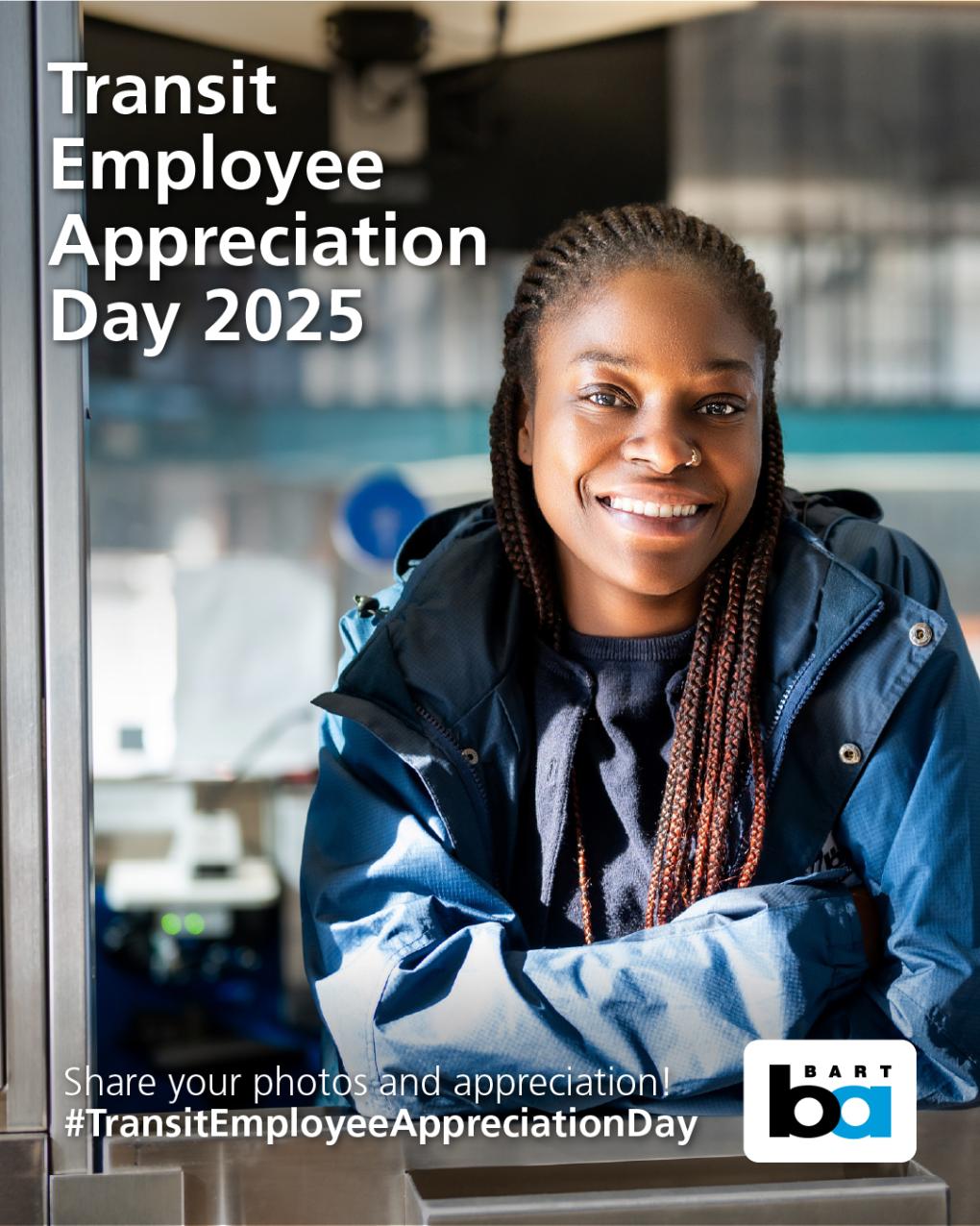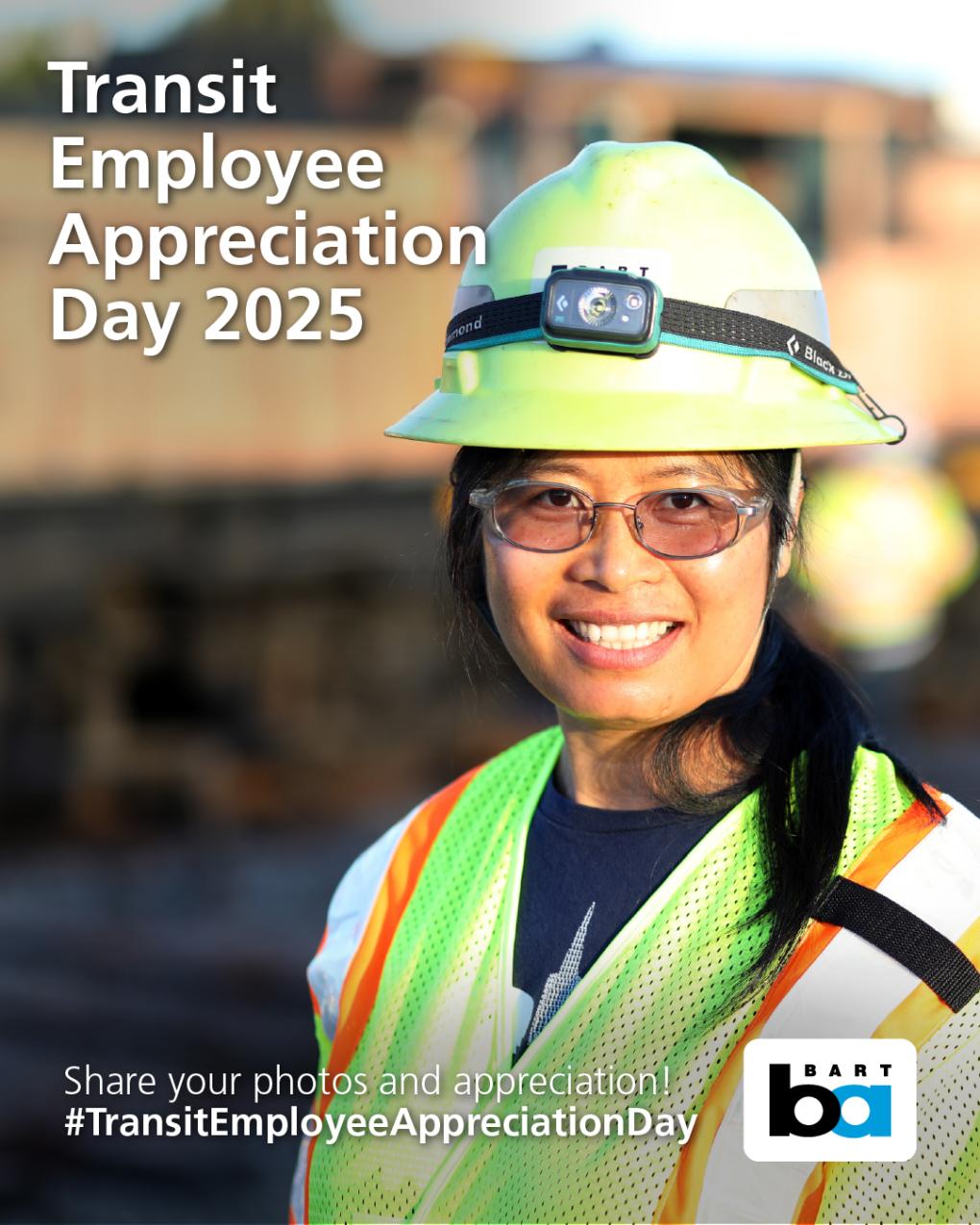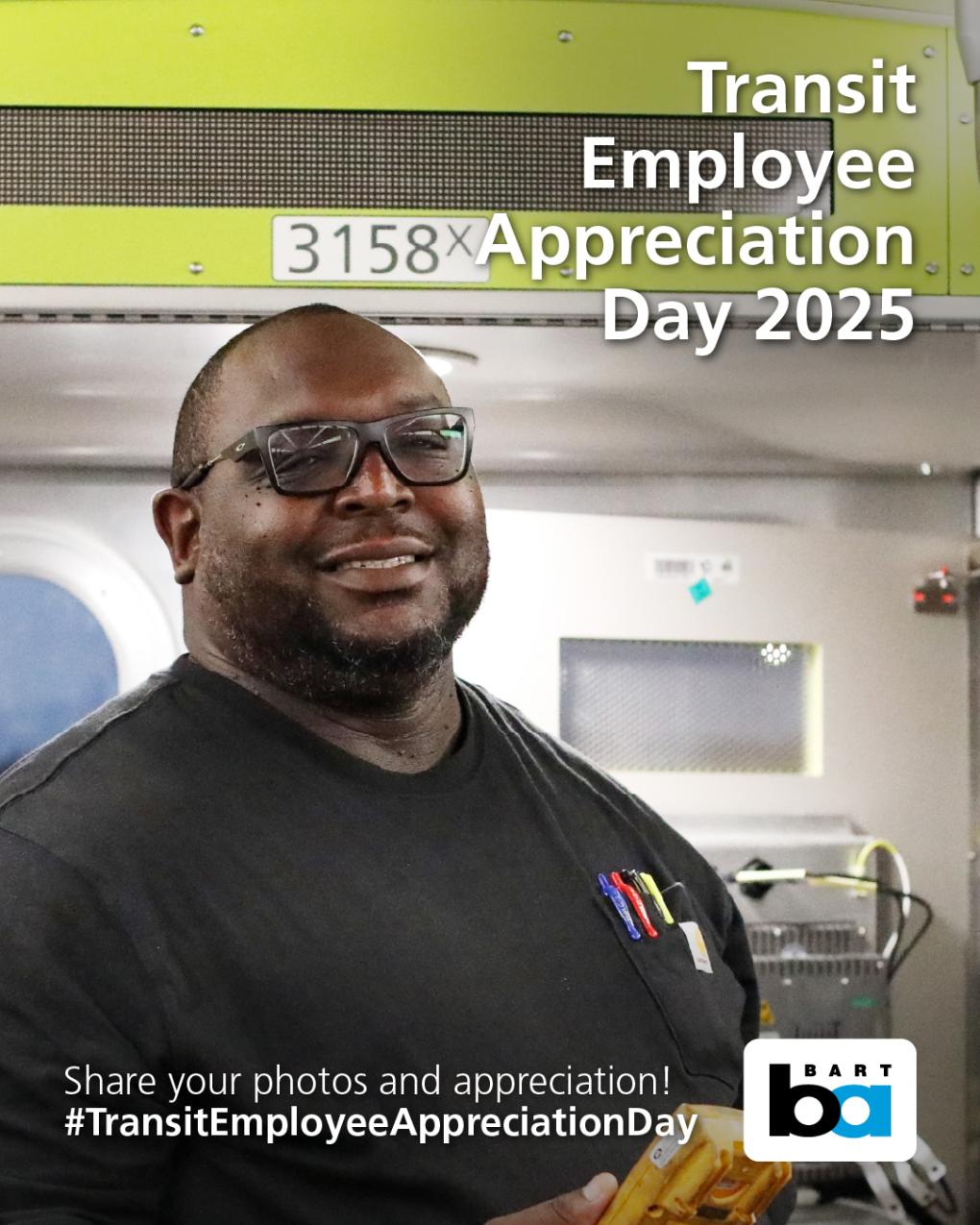Search Results
How to use assisted parking at Richmond Station
Dear Customer: We will be using "Assisted Parking" in the east side parking lot to provide replacement parking during construction of the new parking structure. Assisted Parking will be open from 6 a.m. to 10 p.m. Monday through Friday except for BART holidays and will be staffed by uniformed attendants
Link21 Announces Appointment of 18 Members to Newly Formed Equity Advisory Council
After months of recruitment and a rigorous selection process, Link21 is proud to announce the selection of 18 community members for appointment to the newly formed Equity Advisory Council (EAC). Serving up to a two-year term, members will be compensated for contributing their time, perspective, and “lived
Rider alert: Major Transbay Tube delays on weekend of June 4-5
PRESS CONFERENCE VIDEO FROM FRIDAY, MAY 27 The first weekend of critical maintenance work on the Transbay Tube went according to plan, with another round coming up the weekend of June 4-5. The maintenance means major delays and additional transfers for some customers going through the Transbay Tube.
The Role in the Region Report
Station Area Planning
Bike Planning
Celebrating National Transit Employee Appreciation Day!
Give a wave and words of thanks to BART employees you see today – it's National Transit Employee Appreciation Day!
Every year on March 18, public transit agencies across the nation celebrate the amazing work forces that keep us moving, our economies humming, and our air clean. It's a big job moving the Bay Area, and BART's employees do it with dedication, care and moxie. We appreciate them and hope you do to.
We asked some of our riders to share a message to our employees – hear from them in the video in this article.
On this notable day, BART invites the public to share their gratitude for hardworking transit employees. They appreciate knowing you value them. So, if you’re traveling on transit today, take a moment to say “thanks” to the staff who make your trip possible. A smile or wave goes a long way, too!
Additionally, keep an eye out for signs of gratitude in our stations, including some of our employees featured on posters in station agent booths, and listen for a special PA announcement recorded by BART General Manager Bob Powers.
We can't express enough gratitude to our employees, who are working hard every day to provide high-quality train service to our customers.
And the proof is in the pudding: Last quarter, we elevated our overall customer satisfaction rating to 81%, an increase of 7% from the previous quarter. This is the first time since 2012 that our customer satisfaction rating has broken the 80s! We have our employees to thank for that.
Thank you, BART staff and all the transit employees across the nation. This day is for you!
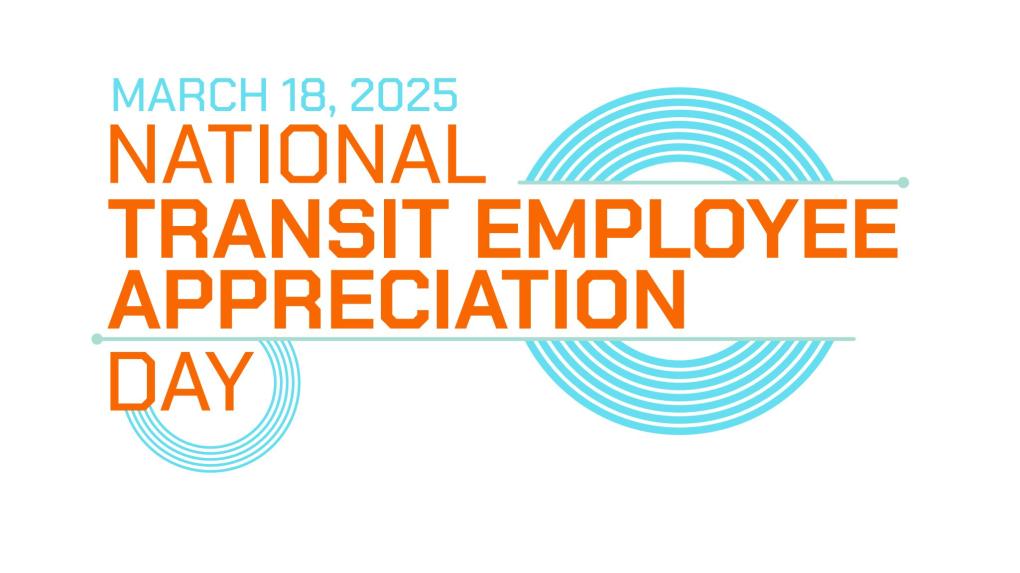
Read about some of our amazing employees
Cleaner trains than ever: Meet the team that has five minutes to clean every BART train
With $300 in her wallet and a dream, one BART track operator forged her own path
BART Chief of Police on BART’s 1972 opening day and a lifetime riding trains
Serial entrepreneur turned Station Agent trainee reflects on his journey to BART
10 Questions with Train Operator Shinita Garza
BART employee stars in new film about famed sign spinner
Train Car Electricians are the neurosurgeons of BART
BART trains now deep-cleaned twice as often -- meet the employees who make it happen
Dispatchers are the “behind-the-scenes heroes” of BART Police
Financial Analysts at BART meld science with art
Train Car Mechanics keep BART trains on the go
Podcast: A lifelong passion for transit inspires a BART Supervisor to improve your ride
From the third rail to station lightbulbs, BART Electricians keep the system energized
BART's Mark Nagales honored his grandmother’s memory with one final trip on a legacy train
What it takes to deep clean a BART station – a process BART recently doubled in frequency
Rail Tales - Infrastructure Storytelling
Anime Mascots News & Events
Updates on weekend service outage in downtown Oakland
(For the most up to date information on BART service delays please visit bart.gov/advisories.)
Update: Tuesday, July 30 (4:30pm)
Red Line service has been reestablished. We will operate with speed restrictions in the downtown Oakland core while repairs are made to the damaged gap breaker station. There is currently not an estimate for how long those repairs will take to complete.
Update: Monday, July 29 (2:00pm)
There’s currently no Red Line service due to ongoing power issues in downtown Oakland. This is being done out an abundance of caution to ensure continued service to Oakland stations.
East Bay riders who would normally use the Red Line to travel transbay can instead take an Orange Line train and transfer to a Yellow Line train at MacArthur Station. A shuttle train is operating between Millbrae and SFO stations.
UPDATE: Monday, July 29 (6:00am)
Red Line service is restored so we have full service on all lines.
UPDATE: Sunday, July 28 (10:47am)
All Oakland stations are open after an earlier loss of power. Service has resumed between MacArthur, Coliseum, and West Oakland stations. All lines are running, excluding the Red Line, which remains out of service.
Expect major delays systemwide.
UPDATE: Sunday, July 28 (10:11am)
Fruitvale and Lake Merritt stations are now open, and Green Line service to Daly City has been restored. 12th St./Oakland and 19th St./Oakland stations remain closed.
AC Transit is providing bus service between MacArthur, Coliseum, and West Oakland stations.
Use the BART Trip Planner on bart.gov or the BART app to find transit alternatives based on your location by deselecting BART in "transit options." View a map of bus and ferry alternatives at bart.gov/transbayalts.
UPDATE: Sunday, July 28 (9:04am)
BART continues to have no service in the core of its system in Oakland. The following stations remain closed: Fruitvale, Lake Merritt, 12th St/Oakland, and 19th St/Oakland. Trains are turning back at Coliseum, West Oakland, and MacArthur stations.
There is currently no Red Line or Green Line service. The cancelled service may not be reflected on station screens.
AC Transit is providing service between the four closed stations, and BART staff are positioned outside of the stations to assist customers. Bus service begins at Coliseum Station, West Oakland, and MacArthur stations. Transbay service is running. You can take a Yellow Line or Blue Line train to and from West Oakland to cross the bay.
Use the BART Trip Planner on bart.gov or the BART app to find transit alternatives based on your location by deselecting BART in "transit options." View a map of bus and ferry alternatives at bart.gov/transbayalts.
Crews are working around-the-clock. Further updates will be provided.
UPDATE: Sunday, July 28 (7:55am)
BART continues to have no service in the core of its system in Oakland and the following stations remain closed: Fruitvale, Lake Merritt, 12th St/Oakland and 19th St/Oakland. Trains are turning back at Coliseum, West Oakland and MacArthur Stations.
Bus service is being provided between the four stations and BART staff are positioned outside of the stations to assist customers. Use the BART Trip Planner on bart.gov or the BART app to find transit alternatives based on your location by deselecting BART in "transit options." View a map of bus and ferry alternatives at bart.gov/transbayalts
This is due to a power loss at a substation that began at approximately 5pm on Saturday, July 27th. The suspected cause is a blown breaker, which caused a major electrical short that essentially short circuited the trackway in that area.
At approximately 5:20pm on Saturday, July 27, we experienced a disruption in service between 12th St/Oakland and Fruitvale stations due to a power issue at an Oakland substation.
As a result, four stations were closed. They are Fruitvale, Lake Merritt, 12th St/Oakland and 19th St/Oakland. Trains are turning back at Coliseum, West Oakland, and MacArthur stations.
Use the BART Trip Planner on bart.gov or the BART app to find transit alternatives based on your location by deselecting BART in "transit options." View a map of bus and ferry alternatives at bart.gov/transbayalts
(This article was originally published on Saturday, July 27)
